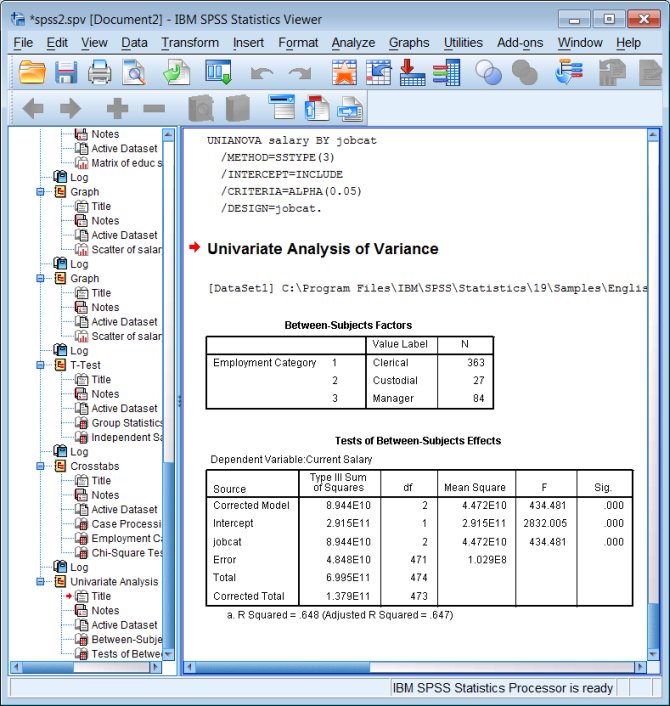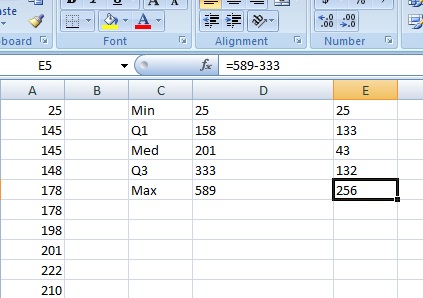
In practice, checking for these nine assumptions just adds a little bit more time to your analysis, requiring you to click a few more buttons in SPSS Statistics when performing your analysis, as well as think a little bit more about your data, but it is not a difficult task.īefore we introduce you to these nine assumptions, do not be surprised if, when analysing your own data using SPSS Statistics, one or more of these assumptions is violated (i.e., is not met). You need to do this because it is only appropriate to use a one-way ANCOVA if your data "passes" nine assumptions that are required for a one-way ANCOVA to give you a valid result. When you choose to analyse your data using a one-way ANCOVA, part of the process involves checking to make sure that the data you want to analyse can actually be analysed using a one-way ANCOVA. However, before we introduce you to this procedure, you need to understand the different assumptions that your data must meet in order for a one-way ANCOVA to give you a valid result.
#ADD WHISKER PLOT IN SPSS IBM HOW TO#
Since the one-way ANCOVA is often followed up with a post hoc test, we also show you how to carry out a post hoc test using SPSS Statistics. This "quick start" guide shows you how to carry out a one-way ANCOVA (with one covariate) using SPSS Statistics, as well as interpret and report the results from this test. If you find a statistically significant difference between interventions, you can follow up a one-way ANCOVA with a post hoc test to determine which specific exercise interventions differed in terms of their effect on systolic blood pressure (e.g., whether the high-intensity exercise intervention had a greater effect on systolic blood pressure than the low-intensity exercise intervention). To control the post-intervention systolic blood pressure for the differences in pre-intervention systolic blood pressure, you can run a one-way ANCOVA with pre-intervention systolic blood pressure as the covariate, intervention as the independent variable and post-intervention systolic blood pressure as the dependent variable. However, the researchers expected that the impact of the three different exercise interventions on mean systolic blood pressure would be affected by the participants' starting systolic blood pressure (i.e., their systolic blood pressure before the interventions). To answer this question, the researchers wanted to determine whether there were any differences in mean systolic blood pressure after the exercise interventions (i.e., whether post-intervention mean systolic blood pressure different between the different interventions). The researcher wanted to know if the different exercise interventions had different effects on systolic blood pressure. Each participant had their "systolic blood pressure" measured before the intervention and immediately after the intervention. The exercise in all interventions burned the same number of calories. They randomly allocated 20 participants to each of three interventions: a "low-intensity exercise intervention", a "moderate-intensity exercise intervention" and a "high-intensity exercise intervention". To do this, they recruited 60 participants to their study. Researchers wanted to investigate the effect of three different types of exercise intervention on systolic blood pressure. On the other hand, if you are not familiar with the one-way ANCOVA, the example below should help provide some clarity. If you are familiar with the one-way ANCOVA, you can skip to the Assumptions section.

If you have two independent variables rather than one, you could run a two-way ANCOVA. In addition, the "one-way" part of one-way ANCOVA refers to the number of independent variables. However, when the covariates are categorical, the analysis is not often called ANCOVA. Note: You can have more than one covariate and although covariates are traditionally measured on a continuous scale, they can also be categorical.

This third variable that could be confounding your results is called the covariate and you include it in your one-way ANCOVA analysis.

As such, compared to the one-way ANOVA, the one-way ANCOVA has the additional benefit of allowing you to "statistically control" for a third variable (sometimes known as a "confounding variable"), which you believe will affect your results. However, whereas the ANOVA looks for differences in the group means, the ANCOVA looks for differences in adjusted means (i.e., adjusted for the covariate). Like the one-way ANOVA, the one-way ANCOVA is used to determine whether there are any significant differences between two or more independent (unrelated) groups on a dependent variable. The one-way ANCOVA ( analysis of covariance) can be thought of as an extension of the one-way ANOVA to incorporate a covariate. One-way ANCOVA in SPSS Statistics Introduction


 0 kommentar(er)
0 kommentar(er)
